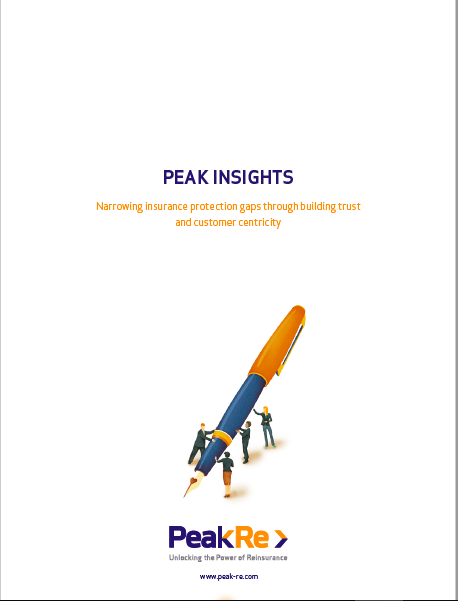Peak Re: PEAK INSIGHTS
October 6 2016
Between 1980 and 2015, and according to the International Monetary Fund, World Economic Outlook Database, emerging Asia reported an average annual real economic growth of over 7%. This performance has attracted companies’ attention all over the world. With such economic development came rapidly increasing risks and premium volumes. Insurance penetration (life and non-life combined) grew more than fivefold to 3.3% between 1980 and 2015, according to Swiss Re’s Sigma World Insurance Database. During the same time period, life and non-life insurance penetrations skyrocketed from both 0.3% to 2.0% and 1.3% respectively.
At the same time, the insurance protection gap widened across the globe, but – despite rising levels of penetration – the shortfall is more significant in emerging Asia. This is primarily a result of inefficient public policies and poor insurance covers that do not properly address customer needs. Typically, insured risks are major natural catastrophes such as storms, floods and earthquakes which remain virtually uninsured: on average, only 5% of economic losses in emerging Asia were (re)insured from 1975 to 2014. In an unfortunate event, for example, around 60% of the financial resources required to recover private property damages come from private sources and not from governments and insurers according to a survey from the Gallup Organisation Europe. This puts a significant burden on the population and can easily drive the affected people and their families into poverty.
-
SIRC: Distinct reinsurance solutions are emerging to address emerging capital strategies: Guy Carpenter
- November 4
As insurers improve their understanding of the risks they are carrying and capital productivity, structured reinsurance and alternative sources of reinsurance capital are being increasingly considered, Guy Carpenter’s Justin Ward says.
-
QBE’s Hammond on transformation and growth
- July 2
The Asia chief executive discusses Covid-19, going digital and restructuring.
-
Swiss Re: Nat cats and man-made disasters in 2018
- April 10
Climate change, increased urbanisation and a growing concentration of assets were on the risk agenda for 2018.
-
Willis Towers Watson: 2019 Asia Market Report
- March 19
Economic uncertainty, more complex risks and tighter underwriting are all influencing Asia's markets.
-
QBE | Elevating customer experience, humanising claims: QBE Asia’s ‘Solutions in a Box’
Vastly improving turnaround times and personalising service delivery, QBE Asia’s award-winning, end-to-end bundled claims solutions is a game-changer for the insurance industry.
-
Beazley | What does cyber protection look like from day 1 to day 600 and beyond?
Cybersecurity is no longer just an IT concern, but a governance issue that belongs on the boardroom agenda.
-
Sedgwick | Preparing for the next storm
Insurance industry needs to recalibrate, invest in innovation and strengthen systems, talent and data practices.
-
Peak Re | From climate modelling to market opportunity: Forging a new clarity on Southeast Asia’s climate risk
Southeast Asia's protection gap: a crisis of clarity, not just capital

